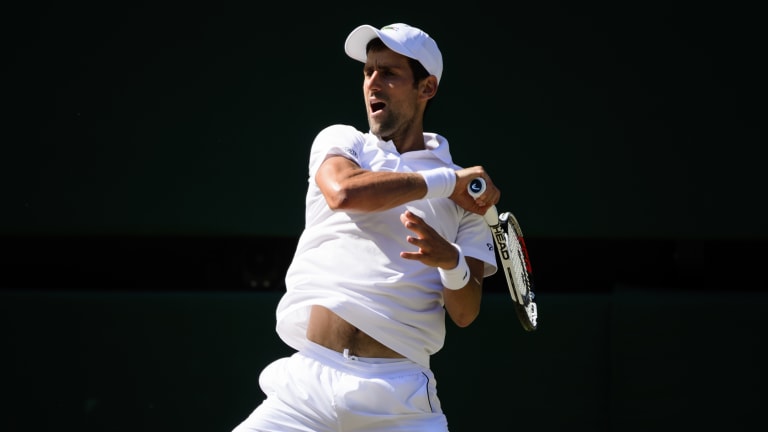GOAT Race
Moment 9: With one forehand, Djokovic ends Roger and Rafa's Indian Summer
By Jul 01, 2023GOAT Race
Moment 10: In the War of 13-12, Novak Djokovic closes the decade with one last epic escape
By Jul 02, 2023GOAT Race
Moment 8: Roger Federer frees his backhand Down Under—and starts a renaissance at 35
By Jun 30, 2023GOAT Race
Moment 7: Djokovic stumbles into net, opening door for Nadal to seize Roland Garros classic
By Jun 29, 2023GOAT Race
Moment 6: At 1:37 a.m., Djokovic topples Nadal in grandiose, grunt-filled Australian Open epic
By Jun 28, 2023GOAT Race
Moment 5: Novak Djokovic hits the all-or-nothing forehand return heard 'round the world
By Jun 27, 2023GOAT Race
Moment 4: Roger Federer stops a 41-match win streak, and wags a finger, at Roland Garros
By Jun 26, 2023GOAT Race
Moment 3: Djokovic “closes his eyes” and hits two huge, match-saving forehands against Federer at 2010 US Open
By Jun 25, 2023GOAT Race
Moment 2: Federer’s four-hour comeback comes up one break point short to Nadal in 2008 Wimbledon final
By Jun 24, 2023GOAT Race
GOAT Race: 10 moments when the Big 3's Grand Slam chase hung in the balance
By Jun 23, 2023Moment 9: With one forehand, Djokovic ends Roger and Rafa's Indian Summer
Federer and Nadal had plans at Wimbledon and beyond. They were changed.
Published Jul 01, 2023
Advertising
Advertising

The unsettled conditions of this two-day semifinal only made the level of play more impressive.
© Getty Images
Advertising

Nadal had three set points in the third set, and five break points in the fifth set. Yet Djokovic still won.
© Getty Images